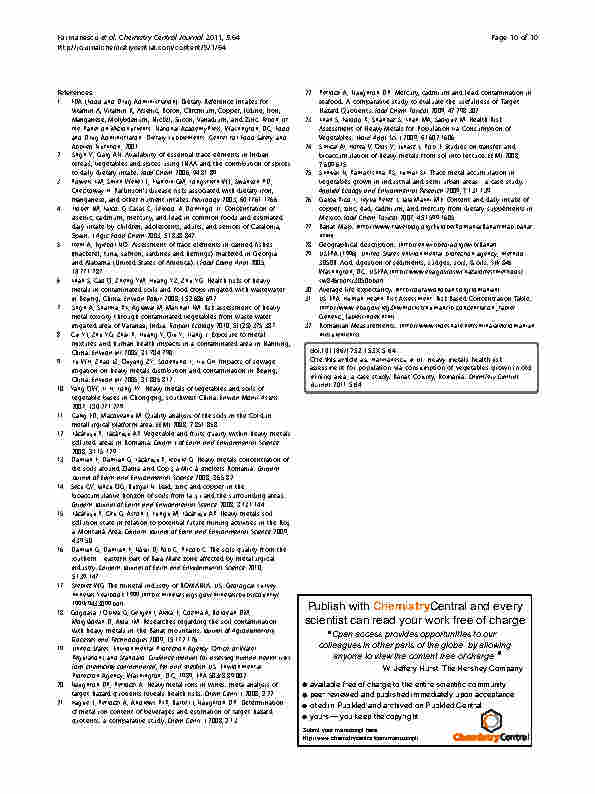Article Heavy metals health risk assessment for population via consumption vegetables_2011(1)
26/08/2024
DOCUMENT DESCRIPTION
Abstract
Background: The aim of this study is to measure the levels of heavy metals (Fe, Mn, Zn, Cu, Ni, Cd and Pb) found
in common vegetables (parsley, carrot, onion, lettuce, cucumber and green beans) grown in contaminated mining
areas compared with those grown in reference clear area and to determine their potential detrimental effects via
calculation of the daily metal intake (DImetal) and Target Hazard Quotients (THQ) for normal daily consumption of
these vegetables, for male and female gender.
Results: Compared with the reference in contaminated areas, soil and plant contents of all analyzed metals are
higher, usually over normally content for Mn, Zn, Cu, Cd and Pb. Particularly, in soil, higher values than intervention
threshold values (ITV) were found for Cu and Pb and higher than maximum allowable limits (MAL) for Zn, Cu, Cd
and Pb for parsley roots and leaves, carrot roots, cabbage, lettuce and cucumber. DImetal and THQ values for male
and female were calculated for each vegetable and metal and for which oral reference doses exist. The combined
THQ values calculated are concerning in that they are usually below the safe level of THQ<1 for all vegetables
grown in reference area. In contaminated Moldova Noua (M) area the combined THQ exceeded the safe level only
for parsley roots, while in more contaminated Ruschita (R) area combined THQ exceeded the safe level for parsley
and carrot roots, lettuce and cabbage. Cd and Pb, most toxic metals to humans, have an increasing prevalence in
the combined THQ for leafy (cabbage and lettuce) and fruit vegetables (cucumber). In the root vegetables only Pb
has an increasing prevalence in combined THQ values. In all areas female THQ is higher than male THQ.


